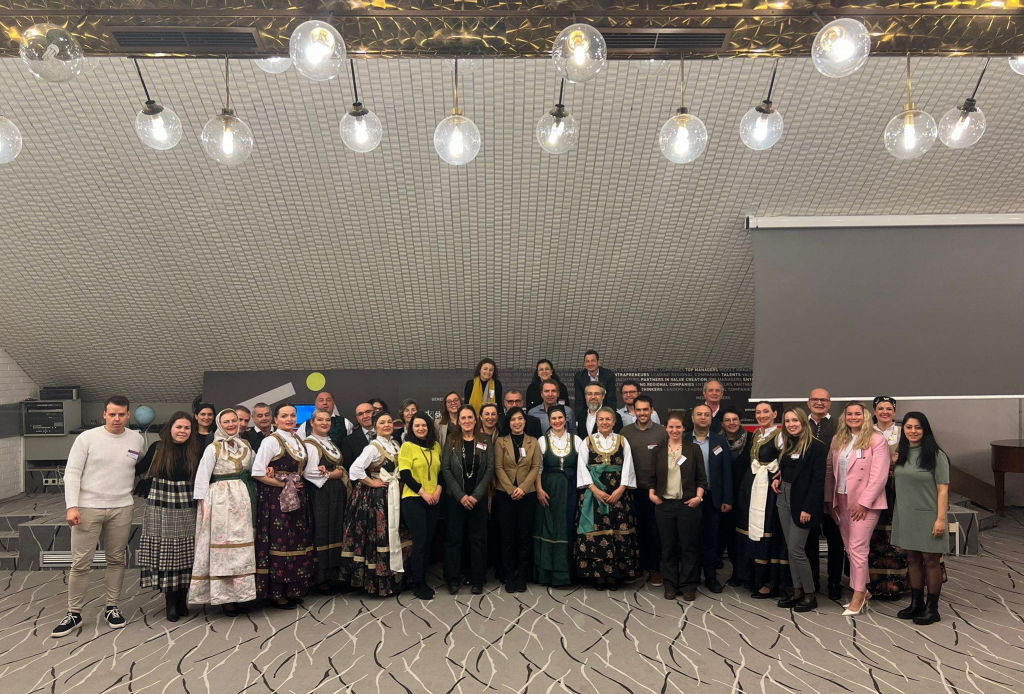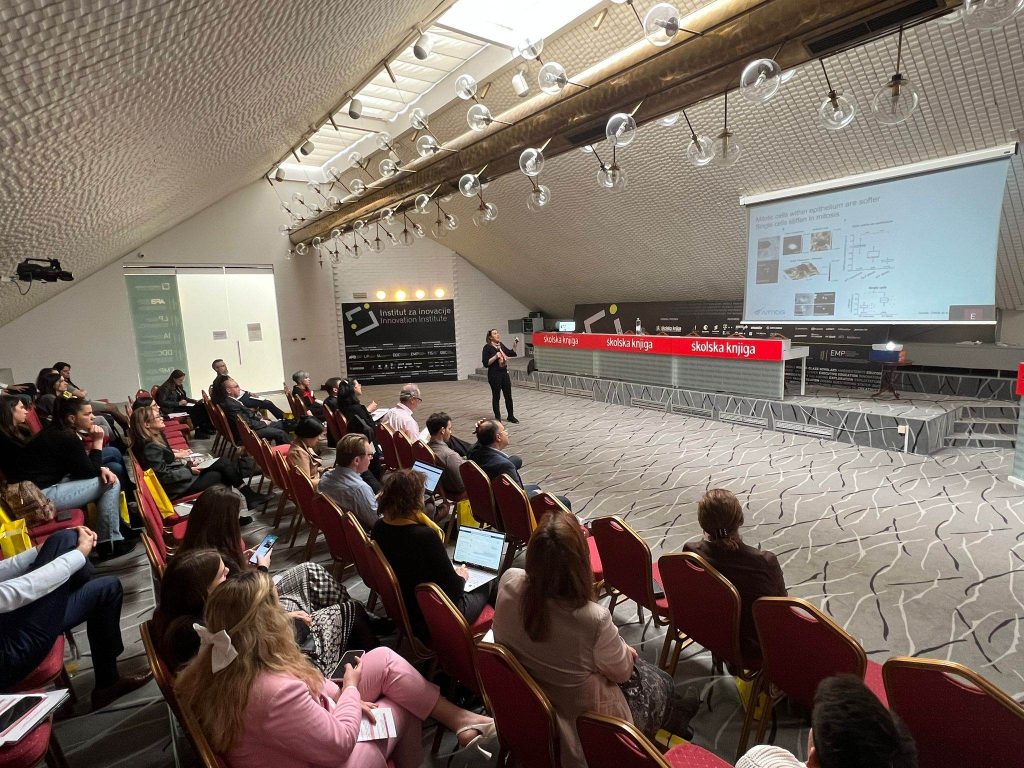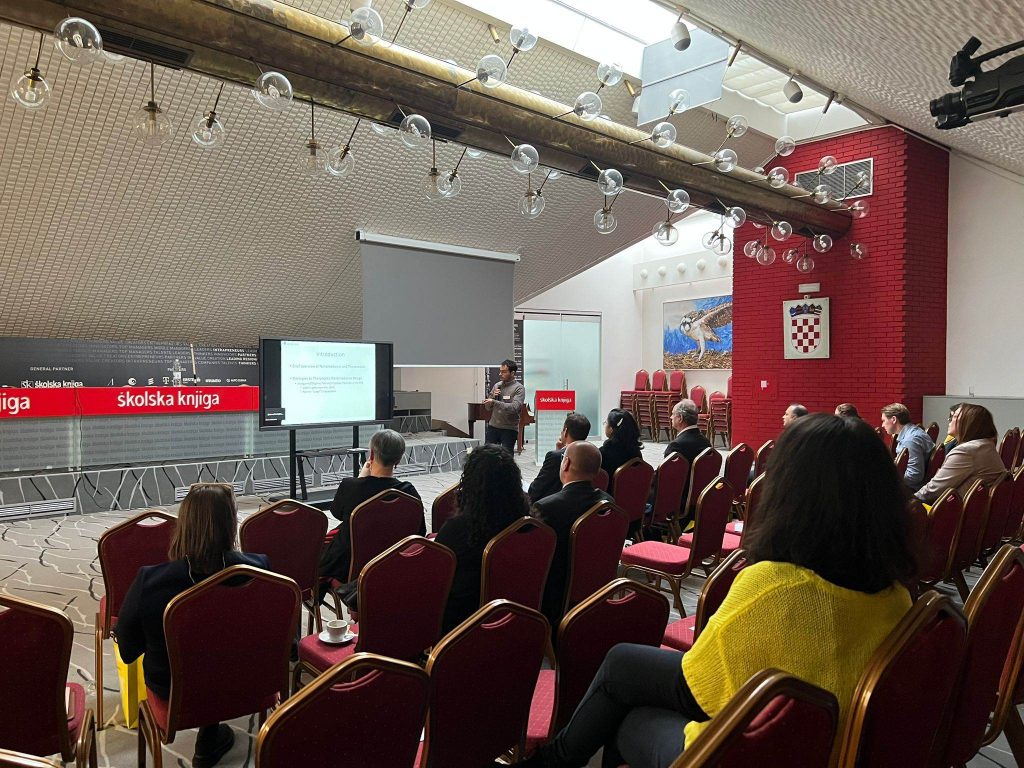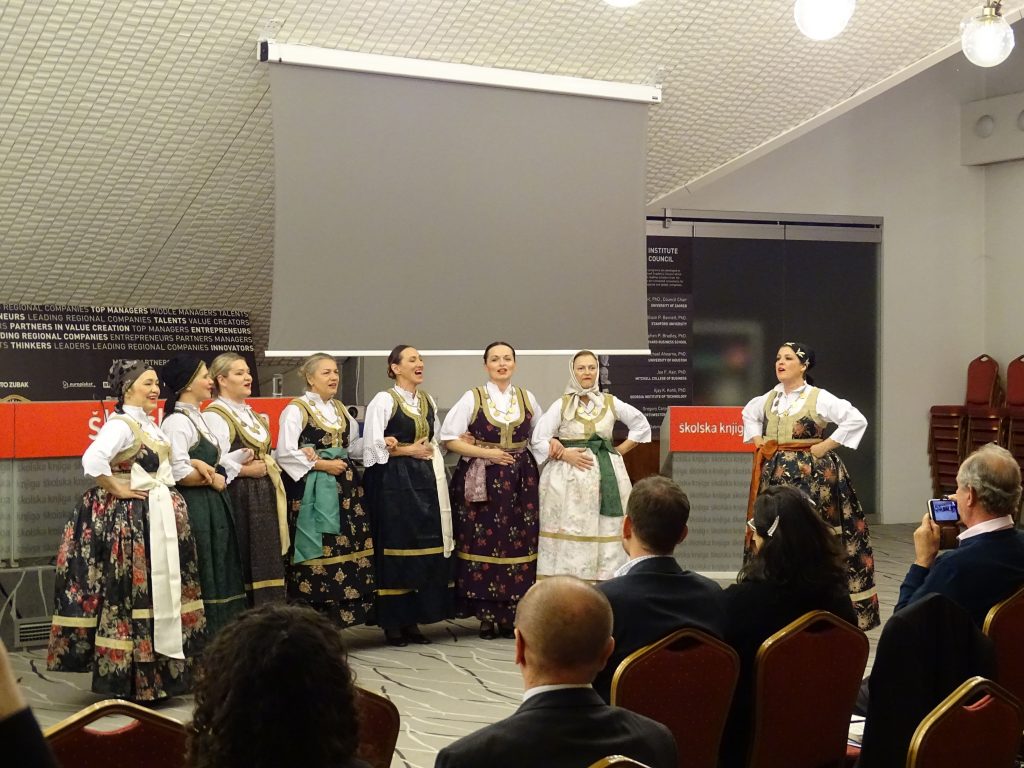
The scientific conference Nano2Clinic – Synergies for Clinical Translation of Nanotechnology in Cancer Therapies was held on March 3 in the Great Hall of Školska knjiga in Zagreb. The event was organized under Nano2Clinic: Cost Action CA17140 – Cancer nanomedicine – from the bench to the bedside. With the support of ‘’Pharmaceutical Open Innovation Test Bed for Enabling Nano-pharmaceutical Innovative Products’’ – PHOENIX (funded by European Union Horizon 2020 Programme under grant agreement nº 953110) and ‘’Safe-by-Design Approach for Development of Nano-Enabled Delivery Systems to Target the Brain’’ – SENDER (funded by the European Social Fund).
The local organizer of the meeting was the Institute for Medical Research and Occupational Health in Zagreb under the leadership of Ivana Vinković Vrček, while additional support was provided by seven sponsors (Biovit, AlphaChrom, Croatian Tourist Board, City of Zagreb, Yasenka, Medic, Gorea Plus). The scientific program of the lectures focused mainly on three factors discussed by the participants: safety aspects, regulatory aspects and aspects of training and education for a well-qualified workforce and patients. The event was attended by 47 participants from as many as 15 countries.
The meeting was officially opened by the main organizer Ivana Vinković Vrček, after which the deputy director Irena Brčić Karačonji gave a few words on behalf of the Institute for Medical Research and Occupational Health. Afterwards, Ivica Malnar from HALMED, the agency for medicinal products and medical devices, gave an introductory lecture on the Croatian market and regulations.
After the introductory greetings and lectures, presentations on the goals and successes of the Nano2Clinic and Phoenix projects followed by the lecturers: Sabrina Pricl, University of Trieste, CA17140 Chair; Cost Action CA17140 Nano2Clinic achievements and lecturers: Nazende Günday-Türeli, MyBiotech GmbH, PHOENIX-OITB Coordinator; PHOENIX-OITB project presentation.
Then, in the second part, the topic of discussion was best practice, where presentations were given by lecturers: Elisabet Gonzales, Institut de Ciència de Materials de Barcelona (CSIC)-CIBER-BBN; Best practice: Clinical translation of orphan nanodrug, and lecturer: Marija Plodinec, CEO ARTIDIS; Best practice: Nanotool for cancer diagnostics.
In the third section of the meeting, there were three presentations on the importance of regulations by the lecturers: Jon de Vlieger, Strategy Director at Foundation Ligature; International regulatory advances for Nanomedicines and their follow-ons, lecturer: Mike Isles, Executive Director, The European Alliance for Access to Safe Medicines; The importance of having the right policies and regulations in place to ensure patient safety – the case for nanomedicines, lecturer: Marco Giardiello, University of Liverpool, British Society for Nanomedicine; Novel Approaches to Theranostic Nanomedicine Design.
Lastly, the final three presentations on risk assessments of nanomedicines were held by the lecturers: Ulf Kahlert, Otto-von-Guericke-Universität Magdeburg, Faculty of Medicine; Target efficacy vs. Off-target risk of nanodrugs: Lessons learned from individualization of chemotherapies using co-clinical organoid test system, lecturer: Blanca Suarez Merino, Regulatory Affairs Director, Nanotechnology Industries Association NIA; Regulatory aspects of clinical translation of nano-enabled products, lecturer: Maria Dusinska, RiskGone Project Coordinator, Norwegian Institute for Air Research – NILU; Risk Assessment in Nanomedicine.
The presentations were followed with great attention by the participants, and each lecture was followed by a rich discussion. The ceremonial closing of the meeting was enriched by the Ethno Club Zagreb, where the dancers through song and dance, presented Croatian cultural heritage, thus brightening everyone’s mood.
This meeting aimed to strengthen relationships between industry, the R&D&I sector, regulatory agencies, clinics, and patients with the ultimate goal of fostering the clinical transfer of nanomedicine from table to bedside. By promoting scientific exchange, technological implementation, and innovative solutions, the meeting enabled a dialogue to rationalize and focus EU-level research efforts in the face of the great challenge of translating nanomedicine for cancer therapies.



